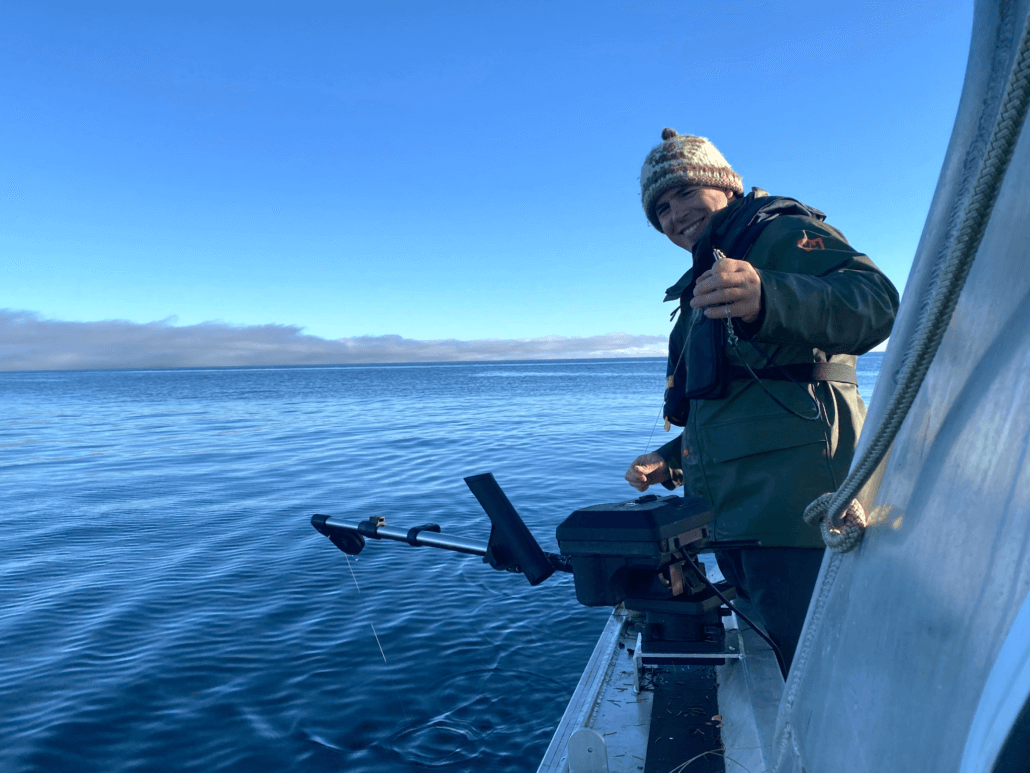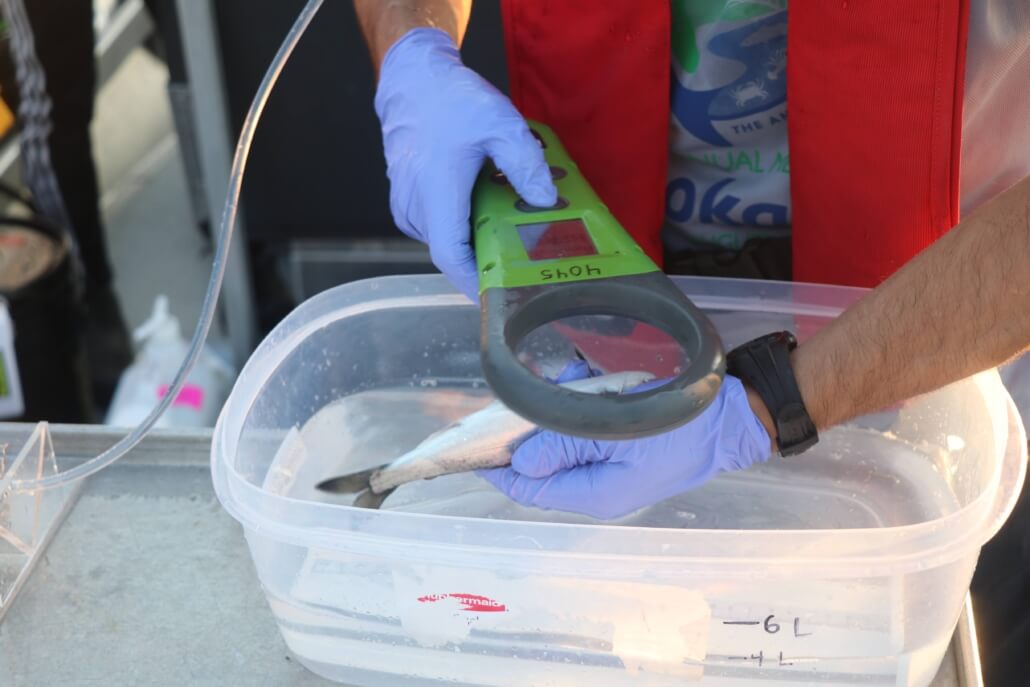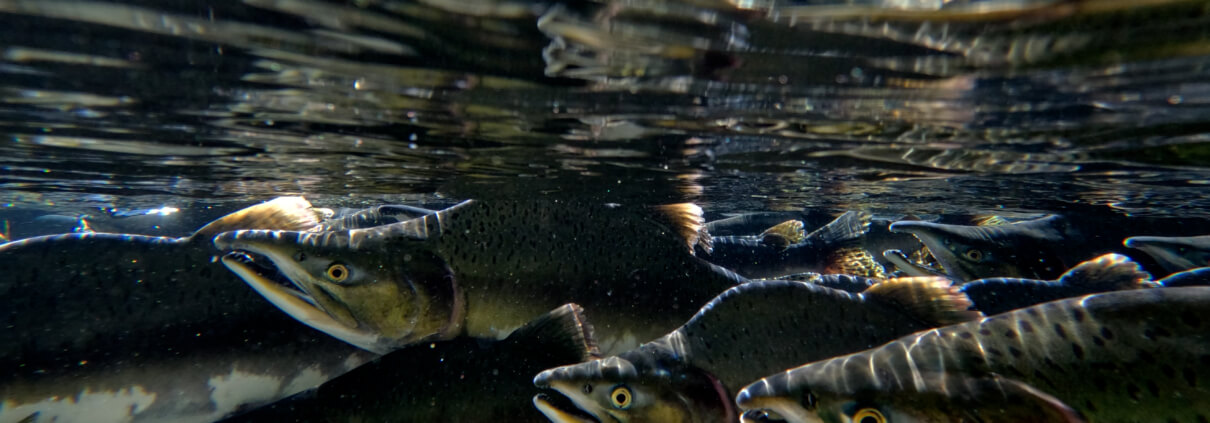State of Salmon: Remarkable year for pinks and coho
Millions of pinks return to the Fraser River and are coho back for good in the Strait of Georgia?
This story originally appeared in the Winter 2023 edition of Salmon Steward, the Pacific Salmon Foundation’s quarterly print magazine.
This summer’s province-wide drought made it a challenging year for salmon. But one good news story that has caught the attention of scientists and anglers was the resurgence of coho in the Strait of Georgia, with many saying it was the best summer season in more than three decades.
Historically, coho catches were upwards of 1 million per year. But when coho mysteriously disappeared from local waters in the early 1990s, fishers were restricted by DFO from retaining any coho in much of the Strait of Georgia and Juan De Fuca. Catches dropped to a tenth of the level seen before 1995 and have not recovered since.
Coho distribution inside and outside of the Strait of Georgia is still poorly understood.

Will Duguid leads the Adult Salmon Diet Program in the Strait of Georgia.
However, the reason behind this summer’s coho comeback – and their initial disappearance 30 years ago – remains unclear. Theories range from environmental variations in ocean salinity levels to physiological factors, such as the growth rate of juveniles in their first year in the ocean.
“Coho distribution inside and outside of the Strait of Georgia is still poorly understood,” says PSF’s Will Duguid, who conducts research on the foraging habits of coho and Chinook in the Strait. “It’s so difficult to know for sure what was behind this summer’s dramatic shift in abundance.”
PSF’s Marine Science Program has several initiatives carrying out research which could provide answers to this mystery.
This includes the Bottlenecks to Survival study, which investigates when and where coho, Chinook, and steelhead face critical mortality periods or “bottlenecks” during their freshwater and early marine periods of life.
Duguid leads unique winter field research that uses Passive Integrated Transponder (PIT) tags to track the movements of salmon during their first winter in the Strait. The tags track individual fish back to their spawning river, gathering data on survival rates at different life stages. The results can help researchers paint a picture of areas coho are favouring in the Strait.

Analyzing what salmon eat can answer questions about distribution in the Strait.
“Spending time monitoring salmon out in the ocean is the best way to figure out whether unexpected coho distribution this year was simply an anomaly or a sign of things to come,” says Will Duguid, PSF scientist.
Another promising avenue of research that could shed light on coho activity is the Adult Salmon Diet Program – a PSF Citizen Science project run out of the University of Victoria. The program, also overseen by Duguid, works by collecting coho and Chinook stomachs, which are then analyzed in the lab, to reveal what they are feed on throughout the year. The results can determine the type of forage fish abundant in certain locations and how food webs and ecosystems might be adapting to climate change.
“Spending time monitoring salmon out in the ocean is the best way to figure out whether unexpected coho distribution this year was simply an anomaly or a sign of things to come,” says Duguid. “PSF’s research is vital for the future management of Strait of Georgia salmon fisheries.”
Bumper year for Fraser River Pinks
It was a good year for salmon spotters in the Fraser River, as the pink salmon run returned substantially more fish than were initially forecasted. The Pacific Salmon Commission increased its initial projections from an estimated return between 6.1 million and 8.6 million fish to a whopping 10.3 million. By November of this year, the 2023 pink salmon run was estimated to stand at 10.5 million fish.
However, while more pink salmon spawners are making it up the Fraser, declines in catch means that the total run size is still eight per cent below the historical average for Fraser River pinks.
Pink salmon return in abundance in odd years to the Fraser River, so Lower Mainland salmon spotters can next expect to see large numbers of returning pinks in 2025.

Pink salmon returned in great numbers to the Fraser River this year.
Find out more about PSF’s Marine Science Program.



